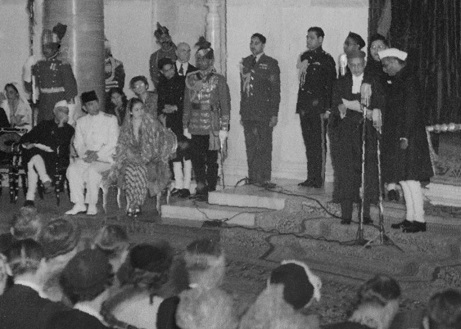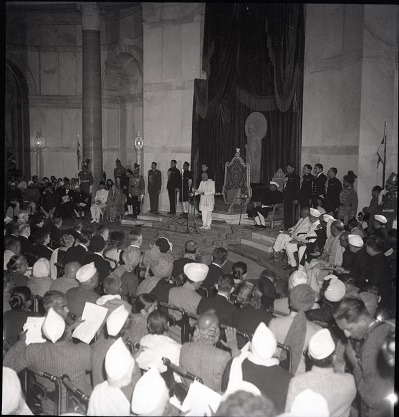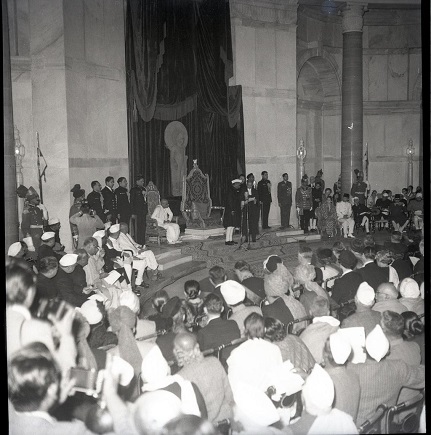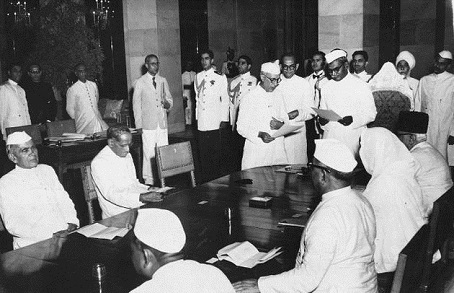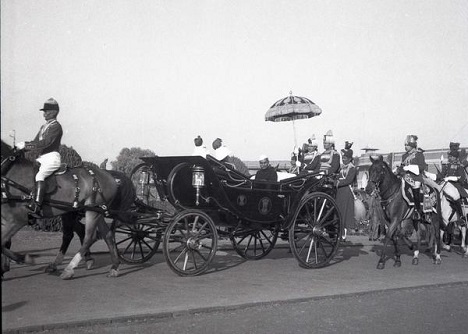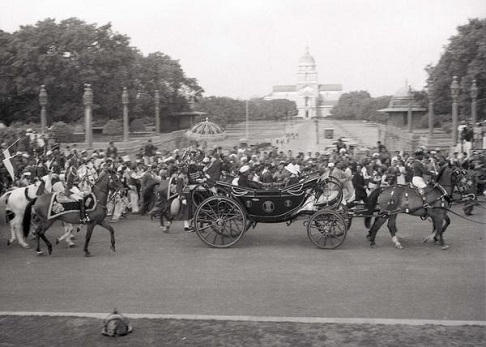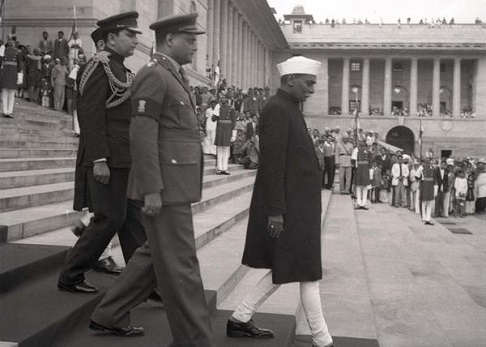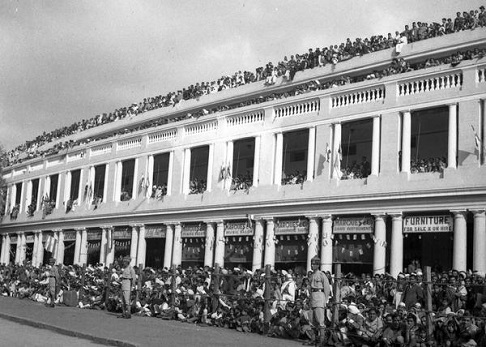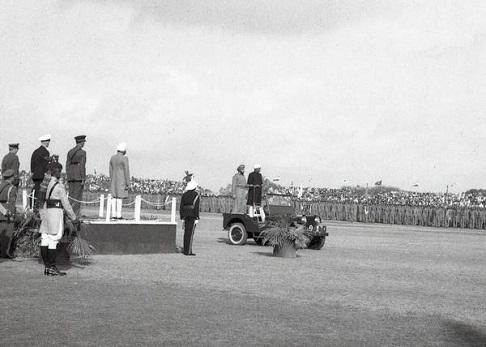Republic Day, India: 1950
This is a collection of articles archived for the excellence of their content. |
Source of photographs
President of India@RashtrapatiBhvn
Archival photographs
Details
V Kumara Swamy, January 26, 2023: The Times of India
It was a chilly Thursday morning on January 26, 1950. The air was charged with excitement. Delhi had been preparing for weeks for this day, the rehearsals for the event had started since it was, after all, a historic day: the day when India would declare itself a Sovereign Democratic Republic. And the first President of India, Dr Rajendra Prasad would be installed in office.
As day broke, different localities of Delhi witnessed early morning processions or 'Prabhat Pheris ' by jubilant citizens, beating drums and blowing conch shells, singing patriotic songs, heralding the arrival of the day. There were similar celebrations across the country.
The day began early for President-elect Dr Rajendra Prasad, with a visit to Rajghat to pay homage to the Father of the Nation.
Soon after visiting the Gandhi memorial spot, Dr Prasad was driven to Government House (later named Rashtrapati Bhavan) where he would meet India's last Governor General C. Rajagopalachari. Both leaders then proceeded to the high-domed Durbar Hall, where Prasad was welcomed with the blowing of trumpets by the President's guards.
Rajagopalachari then read a proclamation at eighteen minutes past ten, according to which, “India, that is, Bharat” was declared a Sovereign Democratic Republic. A few minutes later, Dr Rajendra Prasad was sworn in as the first President of India by the then Chief Justice of India Harilal Kania in the Durbar Hall.
Although the flag of the first and last Indian Governor General of India was different from the British viceroys and governors general, it retained some of the British characteristics. On the other hand, the President's flag replacing it had four equally divided sections with the first quarter carrying the Lion Capital of Ashoka, the second quarter had a 5th-century painting from the Ajanta Caves in Aurangabad, the third quarter had a weighing scale from Delhi’s Red Fort and the fourth had the image of a vase of the Indian lotus from Sarnath near present-day Varanasi. This flag was discontinued in 1971 and the Rashtrapati Bhavan started flying the tricolor.
As a band played the National Anthem, the birth of the Republic to the outside world was announced with a booming of 31 gun salute.
Dr Prasad went on to deliver his acceptance speech in Hindi. In his message, he said India's government would now be "carried on by its people and for its people. “The objective of our Republic is to secure justice, liberty and equality to its citizens and to promote fraternity among the people who inhabit its vast territories and follow different religions, speak various languages and observe their peculiar customs," Dr Prasad added.
The newly installed President later presided over the swearing in of Prime Minister Jawaharlal Nehru, Deputy Prime Minister Vallabh Bhai Patel and Cabinet ministers BR, Ambedkar, Maulana Abul Kalam Azad, Shyama Prasad Mukherjee, Rajkumari Amrit Kaur and others in an anteroom of the Government House.
The public celebrations were to begin in the afternoon.
It began with the President and the chief guest at the function, Indonesian President Sukarno, being driven in a six-horse carriage to New Delhi’s Irwin Stadium (later named Dhyan Chand Stadium) at 2:30pm. Escorted by the President’s Bodyguards, the five mile path was lined with jubilant public raising slogans to hail the republic.
The procession was given a musical touch with a band of the Gwalior Lancers on horse-back leading it. It passed through New Delhi’s Parliament Street, Connaught Circus, Barakhamba Road, Sikandra Road and Hardinge Avenue (Tilak Marg) before reaching the Stadium.
The procession passed through 15 large tastefully decorated, arches depicting scenes from Indian history and civilisation. All of them had popular mottos or verses from the Mahabharata inscribed on them.
The procession took more than an hour to reach the stadium, where India's first Defence Minister Sardar Baldev Singh welcomed the President and Guest of Honour. Later, around 15,000 people inside the stadium witnessed the hoisting of the Indian National Flag and singing of the National Anthem.
Among the guests were foreign ambassadors, princes, Members of the Constituent Assembly, representatives of various provinces of India, school students, government servants and others. This was followed by a march past of the defence forces—contingents drawn from the Indian Army, Air Force, and the Navy. There were also contingents from Delhi Police, and bands of the three services. A fly past by Indian Air Force's Liberator aircraft was also another memorable spectacle. The day ended with the outgoing Governor General hosting a dinner at the Government House for the President, cabinet ministers and other guests. Important government buildings, mosques and temples were decked up for the evening.
The days events were captured by the media with bold front-page stories in the nation’s leading dailies the next day. While the Times of India had a banner headline "India Proclaimed Sovereign Democratic Republic," the Indian Express' went with "India Declared Sovereign Democratic Republic" with a Madras-datelined story talking about how the city had been turned into "City of Lights" thanks to the illumination of buildings in the city to celebrate the day. The Hindu in its editorial said, "For Republican India it is as necessary, as it was for India struggling to be free, to keep the crusading spirit alive. Only, the crusade must be turned against the enemy within. The Constitution has provided us with the shell of democracy. It is up to us to invoke life into it.”
See also
Republic Day, India <>Republic Day, India: 1950 <> Republic Day, India: Guests of Honour, 1951-69 <> Republic Day, India: Guests of Honour, 1970-79 <> Republic Day, India: Guests of Honour, 1980-89 <> Republic Day, India: Guests of Honour, 1990-99 <> Republic Day, India: Guests of Honour, 2000-09<> Republic Day, India: Guests of Honour, 2010-19
